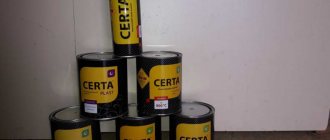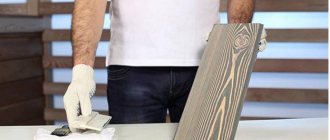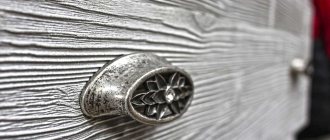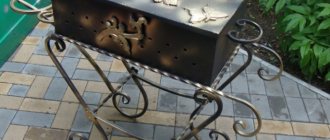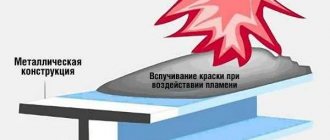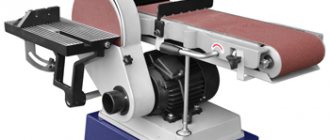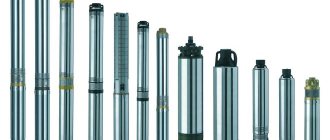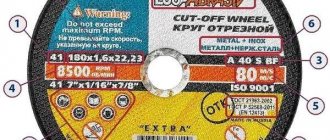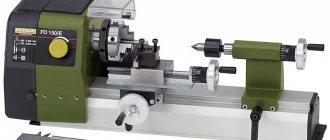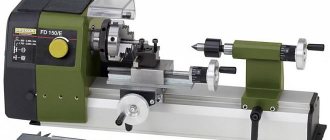Types of powder paints
Powder paint is a material with colored pigment in powder form. It protects the metal surface from moisture and prevents rust. Durability, additional strength and even electrical insulation are its features.
In addition to the pigment, the composition also includes other substances: resins form a film, and catalysts are responsible for hardening. Powder coating is common in construction, automotive and interior design. This way you can achieve a matte or glossy, voluminous or flat surface.
Paint is divided into 2 types:
- Thermoplastic. The decisive factor here is high temperature. Resins are added to the composition: vinyls, nylons or polyester. After heating, they form a hard coating preserving the composition and structure of the original raw material. This powder coating allows the metal object to be reheated and the layers re-formed.
- Thermosetting. Film formation occurs as a result of a chemical reaction. Acrylic, epoxy or polyester resins are used to produce paints.
You can paint objects of any size and even with a complex design Source rzsd62.ru
Thermoactive colors are suitable for products that are used in harsh climatic conditions. Once applied, the powder coating reforms and does not deform when reheated.
The components in the composition are safe. They have a high degree of flowability, which is why they do not stick to objects and skin. The shelf life is unlimited, the color does not fade, and the consistency does not thicken over time. Properties are preserved until the moment of use. No solvent needed.
See also: Catalog of companies that specialize in paints and varnishes and related work
Application in car repair
At the moment, acrylic paints are most often used to mask defects on car wheels. Their practicality lies in the fact that they can be sold in spray cans, which is very convenient for painting. You can get a high-quality result if you carefully spray acrylic paints in a small layer. The attractiveness of these cans is that they can be used to achieve a glossy surface. Buyers are offered a huge selection of colors. A significant disadvantage of acrylic painting materials is that they do not provide chip restoration.
To reliably restore chips, the damaged surface must be primed. Powder paint has good adhesion to the primed coating, that is, it adheres well to it, while efficiently hiding defects. The assortment includes cans that have different concentrations of pigment and allow you to achieve different depths of color. They are able to recreate a glossy surface.
Dyeing technology
When powder painting, painting technology is of great importance. The idea is to spray dry particles onto a degreased and cleaned surface. Positively charged paint particles easily stick to a negatively charged metal surface. This creates an even and uniform layer.
Only two spraying methods are used:
- Electrostatic . Electrostatically charged powder is applied to the grounded surface. This is done using a powder coating gun. Kohler acquires an electrical charge due to ionized air. It is located in the corona discharge area and is formed between the electrodes of the charging tip and the surface to be painted.
Electrostatic Painting Source graco.com
A high voltage source is built into the sprayer design. The main disadvantage of this method is the inability to apply paint into small depressions and recesses.
- Tribostatic . This method uses compressed air. As a result of friction with the dielectric, a charge appears. It holds paint molecules on the surface being painted. The dielectric is fluoroplastic - the atomizer is made from this material. This method is used for painting products with complex geometry. It is possible to use multi-jet nozzles, which increase the accuracy and uniformity of paint application.
Painting equipment
To complete the coloring you will need:
- A special chamber for applying the dye, equipped with air suction devices.
- Feeder.
- Pneumatic sprayer, which is connected to the feeder. The result is a gun-like tool with which paint is applied.
- The polymerization chamber in which the procedure necessary to complete the process is performed.
When the sprayer operates, a mixture of air and dye is created. A torch is formed, the particles of the composition receive an electric charge, after which they settle on the workpiece, held by the force of electrical attraction. The shape of the torch depends on the nozzle installed on the gun.
Stages of work
Powder coating technology consists of three stages of work: surface preparation, painting and polymerization.
Surface preparation
It includes: cleaning from contaminants, degreasing, phosphating.
Dirt, rust and oxides are removed from the surface of a metal product. If you skip the cleaning step, the paint will peel off and you will have to redo it. The best cleaning method is shot blasting. Small granules are directed to the surface under pressure or using centrifugal force. Cast iron or steel granules, as well as sand, are used as granules.
Double layer coating
Basically, powder painting is applied in one layer. But in some cases it will be necessary to apply a second layer. For example, apply varnish to metallic or create a neon shade.
For double layer there are two methods:
- Apply 1 layer and partial polymerization. Then a second layer is applied and final polymerization.
- Each layer is applied and cured separately.
Video description
This video shows how to clean rust from metal.
Chemical cleaning or etching is suitable for degreasing the surface before powder coating of metal products. Sulfuric, nitric or phosphoric acids are used as a reagent. Phosphating is similar to priming. When treated with a special composition, a phosphate film is formed, which improves adhesion.
Coloring
For these purposes, a special room is equipped - a chamber - with a forced air suction system. Large-sized products are painted in walk-through type chambers, and small parts are painted in dead-end type chambers. A special gun sprays the color. The step-by-step process looks like this:
- Powder paint is poured into a special hopper and mixed there with air. The proportions are adjusted using valves.
- A mixture of paint and air passes through a spray gun with a high-voltage source, acquiring a positive charge.
- The process of spraying paint onto the product occurs.
- The last step is extraction to remove loose particles. Entering a special bunker, they are again sent through the painting cycle.
Popular products
Today we offer a large selection of powder dyes. But the most popular products are the following brands:
- Stardust. Powder paints from this manufacturer have many advantages, which come not only from their physical and chemical characteristics, but also from the latest application methods. Stardust paints are of high quality and can be used for all types of surfaces.
- Inver. Powder paints of this brand are intended for painting and protecting metal. They are applied by electrostatic spraying using special installations. Such materials have high adhesion to the surface and perfectly protect the metal from corrosion.
- Limerton. Powder paints from this manufacturer are economical in consumption and easy to use. Used for painting metal, glass and other materials. The resulting coating is environmentally friendly and durable.
- Element. The company offers different types of powder dyes, including polyester, epoxy, polyurethane, and even effect paints. You can paint metal furniture, facade panels, agricultural machinery, automotive components and much more. The resulting coating has anti-corrosion and impact-resistant properties.
Of the options listed above, Stardust products are the most popular. But there are equally high-quality paints from brands such as Teknos and Primatek. Most manufacturers' product catalogs also include antique powder paint, which gives surfaces the appearance of antique copper products.
Powder paints have been known to customers since the last century. But right now they have become increasingly popular, since the technology has been brought to perfection.
How the powder coating process works (2 videos)
Painted products (25 photos)
Video description
This video shows the consequences of underbaking and overbaking paint.
The process of paint polymerization occurs. It takes 15-30 minutes to complete the full cycle. Microparticles of powder paint are melted, forming a film, then hardened and cooled. The time for this stage depends on the size of the part, the type of oven and the type of paint.
The temperature required for the process is kept in the range of 150-200 °C. After which the molten powder fills all small irregularities, this guarantees tight contact between the paint and the surface.
Then the part is cooled. The coating becomes durable, and the product receives protection from adverse environmental influences.
Bottom line
Powder coating is the most economical, fastest and environmentally friendly way to obtain a reliable protective surface on metal. The service life of the product is significantly increased, and the decorative coating can be varied not only in color, but also in structure.
The difficulties of the technology lie in strict adherence to all stages. This requires a special production line. Problems may arise when:
- painting large items;
- products of complex shape;
- structures made of mixed materials.
Video description
This video shows the powder coating process
- To spray powder materials, use the minimum required amount of air. When oversaturation occurs, there is an increase in color consumption, increased load on the equipment, disruption of the electrification process, changes in the granules of the powder material, plus, visibility in the spray booth noticeably deteriorates.
- Use air of the best quality, without impurities.
- Carefully homogenize the powder mixture before use.
- Do not mix different colors. Before using a new color, thoroughly clean the equipment.
- Pay great attention to surface preparation before painting.
- Storage conditions for powder paints must be observed to avoid deterioration of the raw materials, which will affect the final result.
- The technological process must be followed in detail at all stages of painting work.
- Monitoring, prevention and maintenance of units is a necessity.
- Correctly configured production cycles guarantee a reduction in the loss of coloring pigment to 2% -5%.
Rules and recommendations will help achieve uniformity and elasticity of the coating, as well as a long service life.
Polymerization
The use of an oven for polymerization cannot be ruled out, because the paint and varnish material simply will not be able to adhere to metal parts.
The stove is the most expensive piece of equipment on the entire list, but you don’t have to buy it; you can easily make an analogue yourself if you have the right tools and suitable materials.
Briefly about the main thing
Powder paint is a modern type of painting materials for metal. The scope of application ranges from painting small household appliances and interior items to metal structures.
There are two main types of powder paints - thermoplastic and thermosetting. The choice of method depends on the tasks at hand. There are also only two types of dyeing technologies - electrostatic and tribostatic. In the first case, a powerful high voltage source is used, in the second it is absent.
Painting is done in 3 stages: first, prepare the surface - clean it of dirt, dust and old layers of paint. Products are painted using an air suction system. The final stage is polymerization. The painted object is sent to the oven to fix the paint, followed by the processes of hardening and cooling.
Painting features
To ensure complete hardening of the finishing layer, it is recommended to set a lower temperature and extend the curing time. This will help increase the strength of the coating and reduce the likelihood of smudges. The manufacturer indicates the optimal solidification temperature in the accompanying documents.
It is recommended to warm up massive metal products in advance. Then the time during which the parts are in the oven will be sufficient for hardening. Dust should not be allowed in the room. It is prohibited to transport elements on which the paint has not yet cooled.
